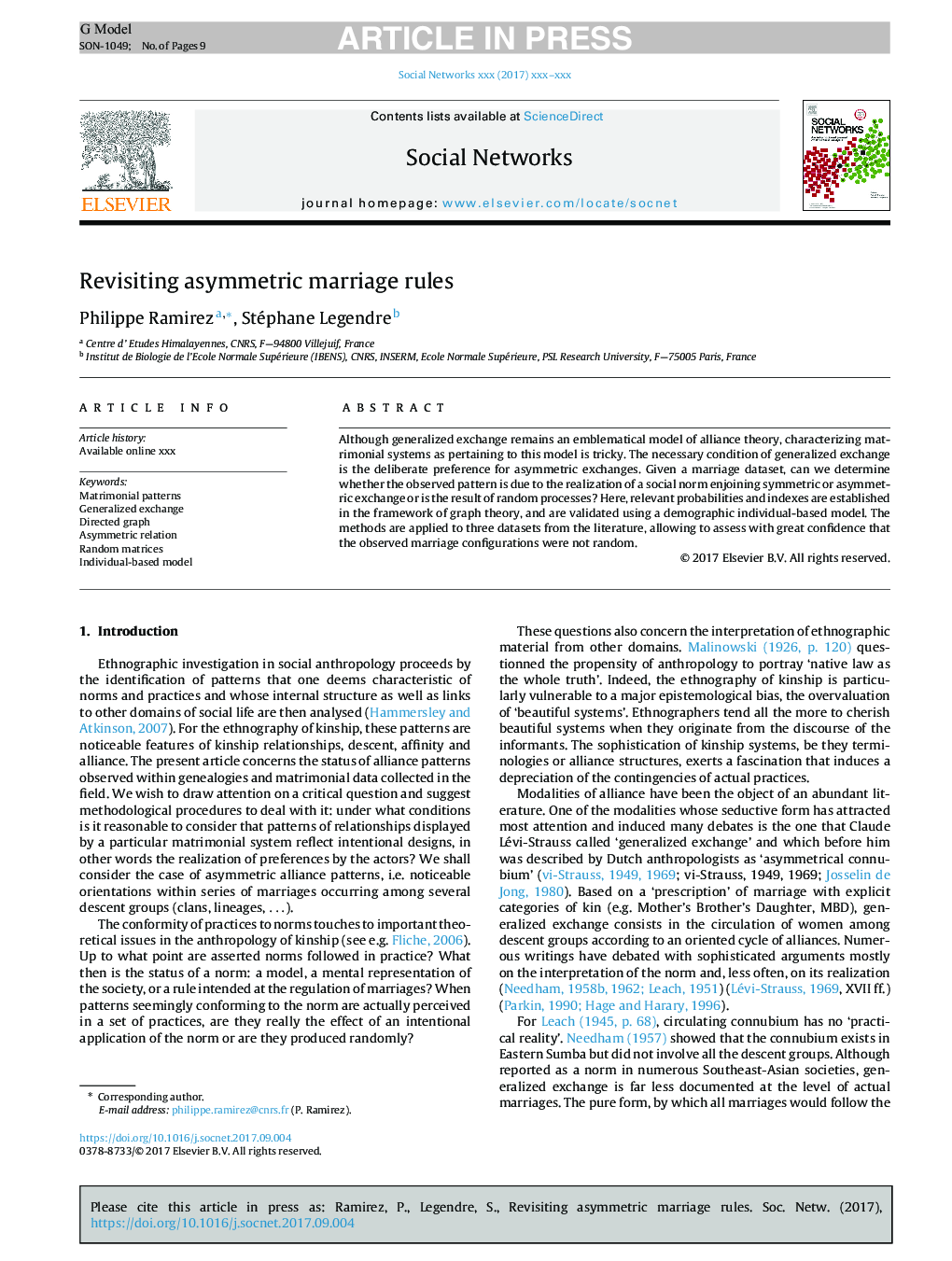| Article ID | Journal | Published Year | Pages | File Type |
|---|---|---|---|---|
| 7538363 | Social Networks | 2018 | 9 Pages |
Abstract
Although generalized exchange remains an emblematical model of alliance theory, characterizing matrimonial systems as pertaining to this model is tricky. The necessary condition of generalized exchange is the deliberate preference for asymmetric exchanges. Given a marriage dataset, can we determine whether the observed pattern is due to the realization of a social norm enjoining symmetric or asymmetric exchange or is the result of random processes? Here, relevant probabilities and indexes are established in the framework of graph theory, and are validated using a demographic individual-based model. The methods are applied to three datasets from the literature, allowing to assess with great confidence that the observed marriage configurations were not random.
Related Topics
Physical Sciences and Engineering
Mathematics
Statistics and Probability
Authors
Philippe Ramirez, Stéphane Legendre,
